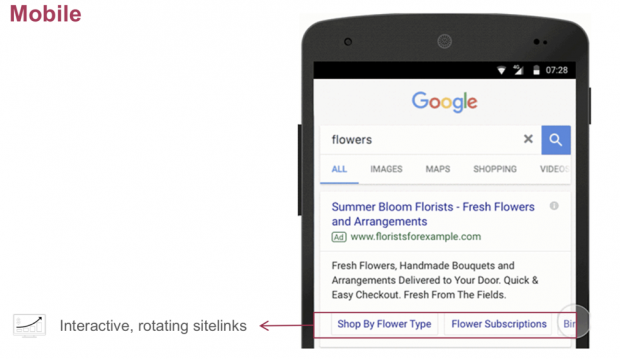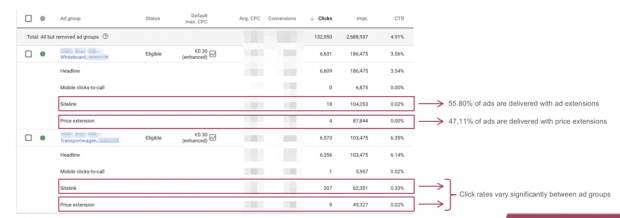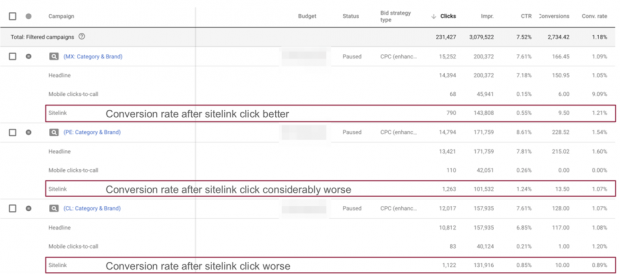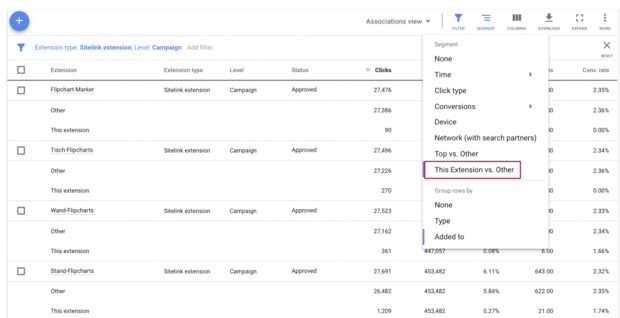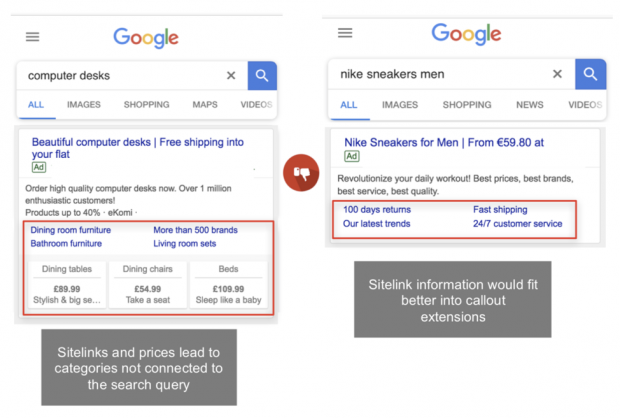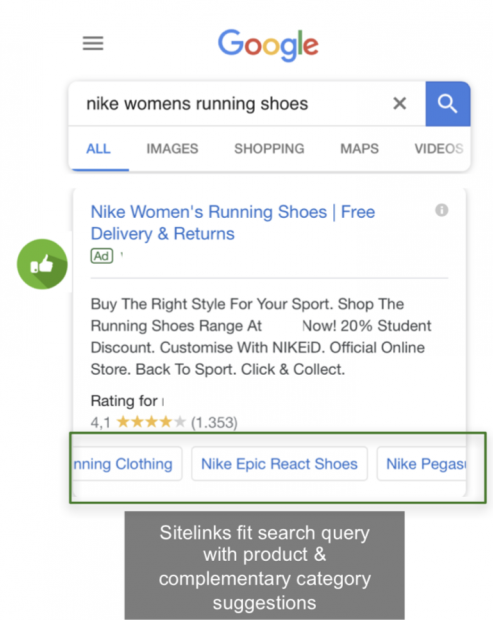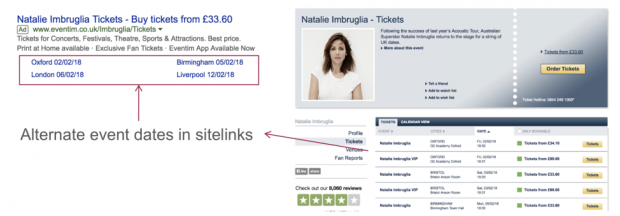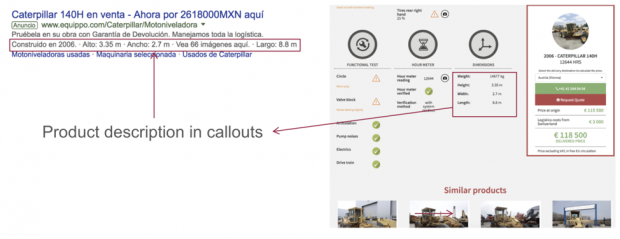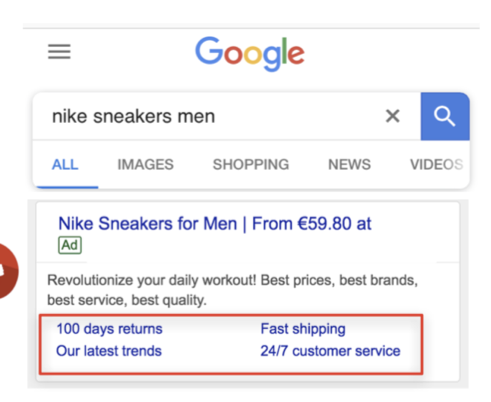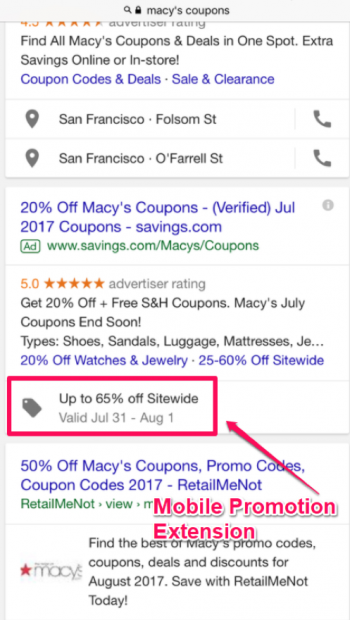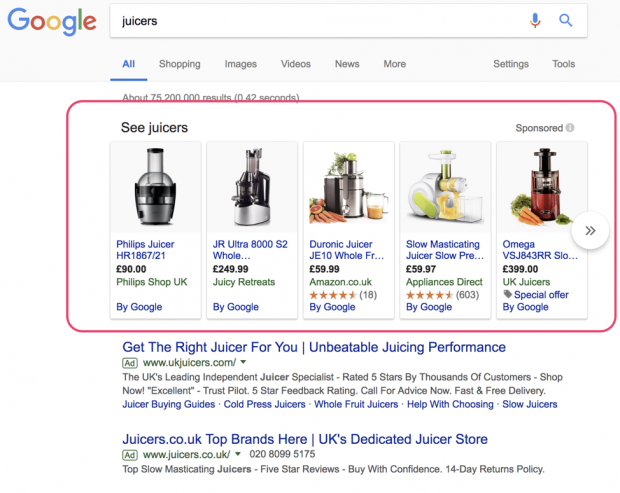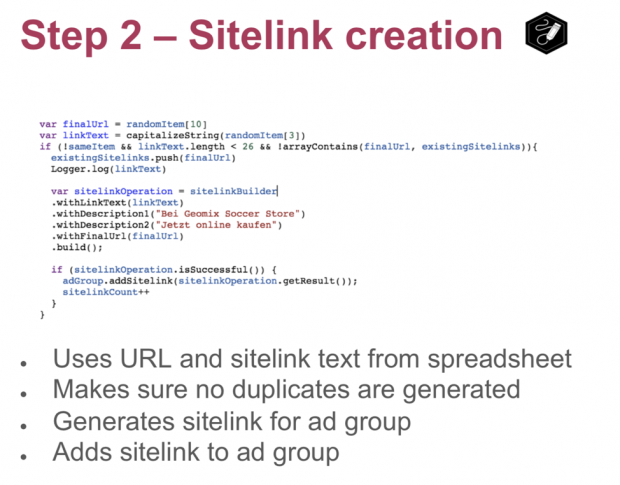This post is part of our 3-part HeroConf London 2018 series, where we’re sharing session insights exclusive to attendees only – until now! This post covers an expert session about perfecting ad extensions. Stay tuned for part 2 and 3 to come!
Ad extensions are a godsend for any PPC marketer. When you get it right, they can provide an increase in CTR and conversions (not to mention hogging precious SERP real estate). But not all extensions are made equal.
You may find, for example, that sitelinks generate very little attention – or worse, the clicks you do get generate a horrifically low conversion rate. So, how do you optimize your ad extensions to get the best results? In his HeroConf workshop, “Ad Extensions as a Lever for Powerful Text Ads,” Stefan Stopper from Smarter Ecommerce shares his practices for making ad extensions work for you.
Here, you’ll learn how he increased results for his clients by measuring the performance of existing ad extensions, how to optimize them based on user intent and a method of automating the entire process.
Measuring Performance of Existing Ad Extensions
When going deep into something as tactical as ad extensions, it’s important to measure existing results and prioritize campaigns/ad groups for your optimization efforts first.
According to Stefan, sitelinks fit within the pillars of four marketing goals:
- Getting customers to buy from your location: Location, Affiliate Location and Callout Extensions
- Getting customers to contact you: Call and Message Extensions
- Getting customers to convert on your website: Sitelink, Callout, Structure Snippet and Price Extensions
- Getting customers to download your app: App Extensions
Here’s how they look on the SERPs:
On mobile, Google uses rotating and interactive elements, making for a cleaner experience on smaller screens:
When using ad extensions as a central point for optimization, start with the numbers. Here, Stefan looks at the share of impressions and click-through rate of ad extensions across all top-performing campaigns:
Opportunities lie in both high performers and ad extensions that generate a low percentage of clicks. For the high performers, you can analyze performance from a conversion point-of-view:
Here, you can see that conversion rates vary across each campaign. In fact, under campaign “PE: Category & Brand,” you can see that it generates the majority of clicks while having the lowest conversion rate.
Using this insight, you can begin to investigate why this is happening. One way of doing this is running a comparison across your extensions. For example, start by setting a filter to display sitelink campaigns at the campaign level. Then, segment by “This Extension vs. Other:”
From here, it’s time to take an honest look at your ads and the extensions they use. It’s not just about what your ad extensions “say,” but which extension types you use in the first place.
How to Run Ad Extension Experiments for Higher Conversions
Analyzing performance across each ad extension allows for an apples-to-apples comparison. You’ll begin to see why one campaign performs better than the other, allowing you to figure out what’s causing the difference.
In some cases, the difference is clear. For example, you might be including sitelinks that share no relevance to the intention of the searcher:
In the example above, the sitelinks for someone looking for “computer desks” seem random, and fail to continue the journey the searcher has started. Similarly, with the Nike example below, this information would be better laid out in a different manner.
There’s a clear opportunity for optimization here. For the Nike example, instead of serving links to different parts of their service offering, they could include links to product pages relevant to the searcher’s query:
This approach can work for any industry. For example, a ticketing website can use sitelinks to offer alternative concert dates for a specific artist:
For B2B organizations, product callout extensions can include the specifications of complex, high-ticket offerings:
The primary methodology here is understanding and catering to user intent first. If the ad extensions you’re offering don’t assist the searcher to reach their desired outcome, then don’t use them in the first place.
4 Ad Extensions Optimization Tips
You should now have an understanding of the general methodology behind this approach. Let’s look at some specific tips you can apply to your thinking when coming up with hypothesis for your experiments.
1. Match Sitelinks to Search Intent
In the examples above, you saw how irrelevant sitelinks can lead to a disjointed customer experience. If I search for “computer desks,” for example, and see links for “lounge furniture,” it’s likely to confuse me as a buyer.
Instead, use sitelinks that assist users in getting to their end goal as quickly as possible. For example, including specific products for a broad term like “nike womens running shoes” can provide shortcuts within the buyer’s journey. This approach can work for any product category:
Not sure which products to include? Look at your top performing products under that category. Include sitelinks to your top sellers in order to increase the chances of converting a user into a customer.
When adding sitelinks to your campaigns, follow these guidelines:
- Use for branded search terms or broad match keywords
- Aim for 25 characters or less for each title
- Avoid sitelinks when running highly targeted campaigns (long-tail keywords)
- Optimize sitelinks for mobile experiences
- Use a single selling-point for each description
2. Use Copywriting Principles on Callout Extensions
Remember this example from earlier, which used sitelinks to “show-off” various value propositions?
The copy itself helps reduce anxiety and boost trust, sure. But they’d be far better off as callout extensions. This way, the sitelink extension can be reserved for product-related links that continue the searcher’s journey.
When including callouts, follow these principles:
- Include general offer details such as guarantees, free shipping and seasonal offers
- Stick to 25 characters to quickly capture attention
- Improve your CTR by creating a highly specific call-to-action
- Use for broad match search terms
3. Create Urgency with Promotion Extensions
Keywords with high commercial intent are a big opportunity for eCommerce advertisers. The question is, how do you get searchers to take action? The answer: tempt them with promotions.
Using the promotion extension, you can include percentage and monetary discounts for specific products. Here’s how they look in the SERPs:
Follow these promotion best-practices to make the most of these extensions:
- Plan promotions well in advance and schedule them in Google Ads
- You can choose monetary or percentage discounts, both specific and “up to”
- Accompany your promotions with a relevant landing page
- Historical data allows you to compare promotional performance across different periods
4. Jump on Product Listings
While not an ad extension per se, product listing ads (PLAs) can generate extra attention for your products and capture more SERP real estate (when done the right way).
With PLA’s, you can include a product name, photo, price and promotional message all within the same listing. Here’s how they look on the SERPs:
As you can see, this is the first thing that appears for this broad-term keyword in the SERP. Thinking of experimenting with this Google Ads feature? Follow these tips:
- Use sharp, clear imagery
- Experiment with colors to contrast against competitor products
- Include reviews as a social proof point
- More than one relevant product means appearing more than once on the same results page
Automate Your Sitelink Placements
Stefan wrapped his session up by addressing one of the biggest pains we face as PPC marketers: adding extensions for each ad manually.
Luckily, Stefan and the folks at Smarter Ecommerce have created a series of scripts to automate the following processes:
- Data exploration
- Sitelink creation
Ad Extensions and Sitelinks are About Search Intent
According to Stefan, ad extensions are growing in importance — especially on mobile devices. As you can see, they’re effective for increasing CTRs and generating relevant traffic to the products customers are looking for.
You can implement these sitelinks manually, or use a script like the one Stefan has provided here to automate the process. Whichever approach you take, it’s important to stick to best practices and principles that serve the right ads to the right searchers.
It’s all about search intent. Help your audience find what they’re looking for, and you’ll see CTRs and conversions soar.
Image Credits
Feature Image: Unsplash / NeONBRAND
Image 1-11, 14-15: Screenshots by author. Taken October 2018 from Google.
Image 12: via PPC Professionals
Image 13: via Digital Reach Agency


